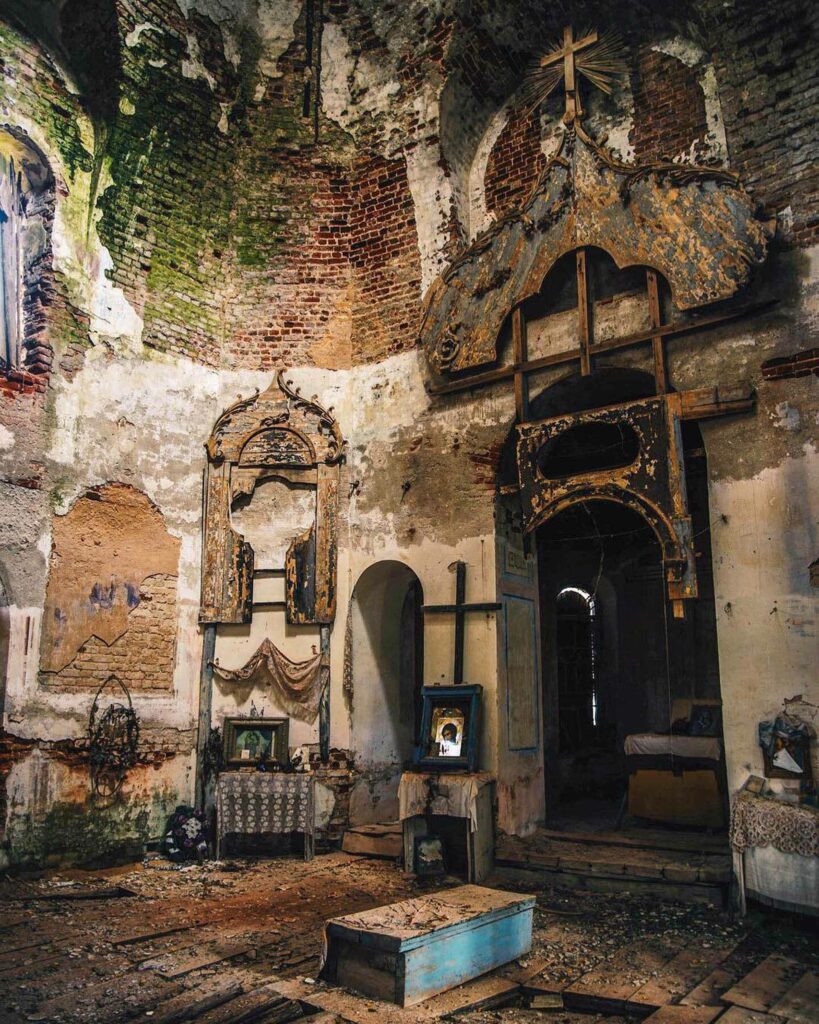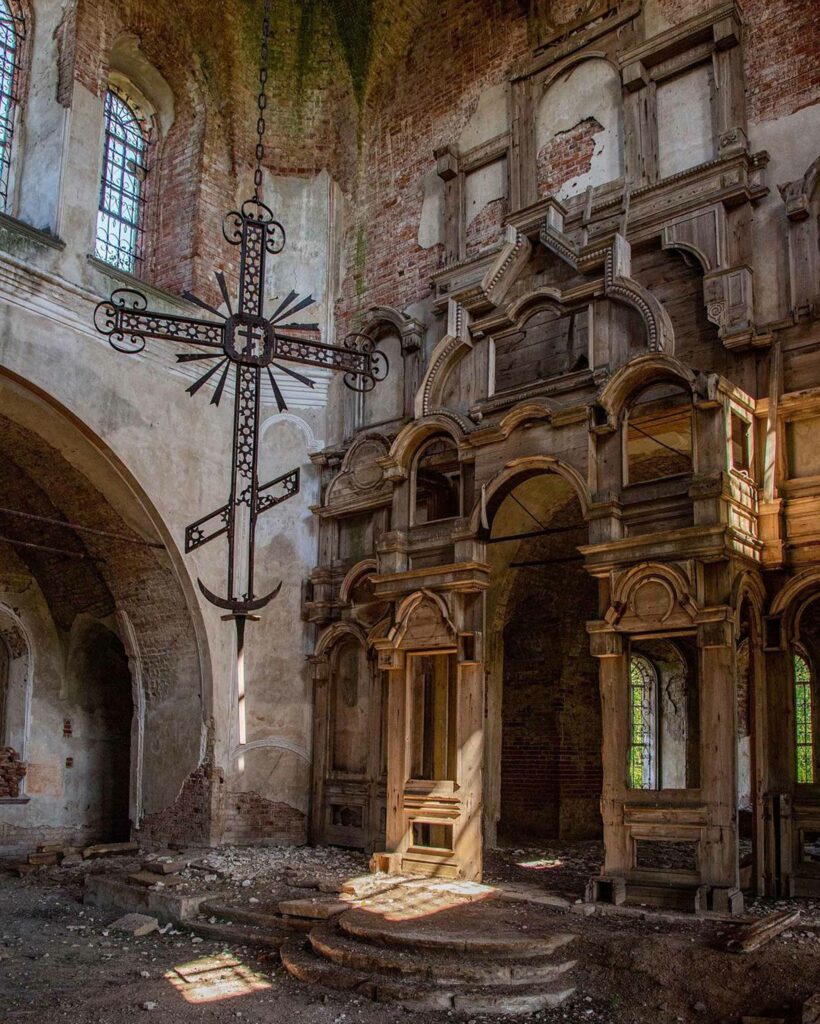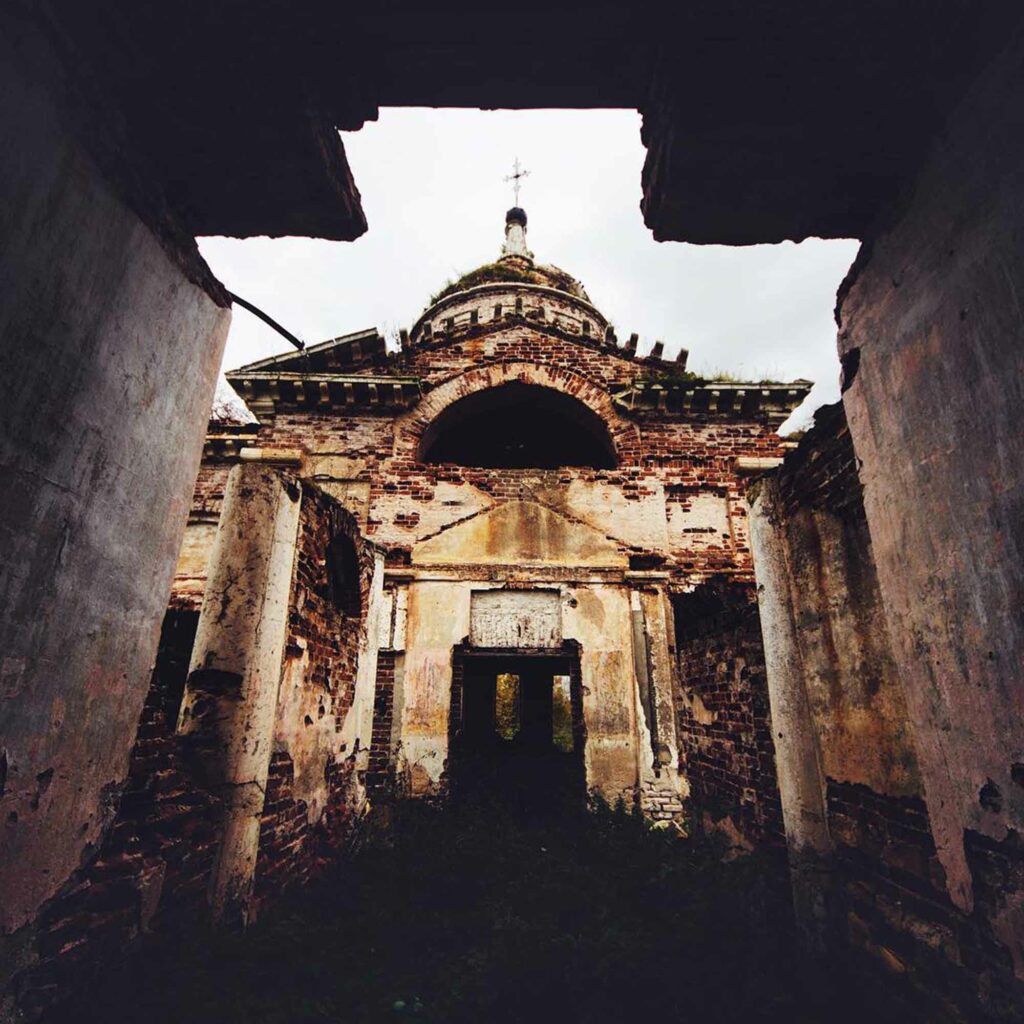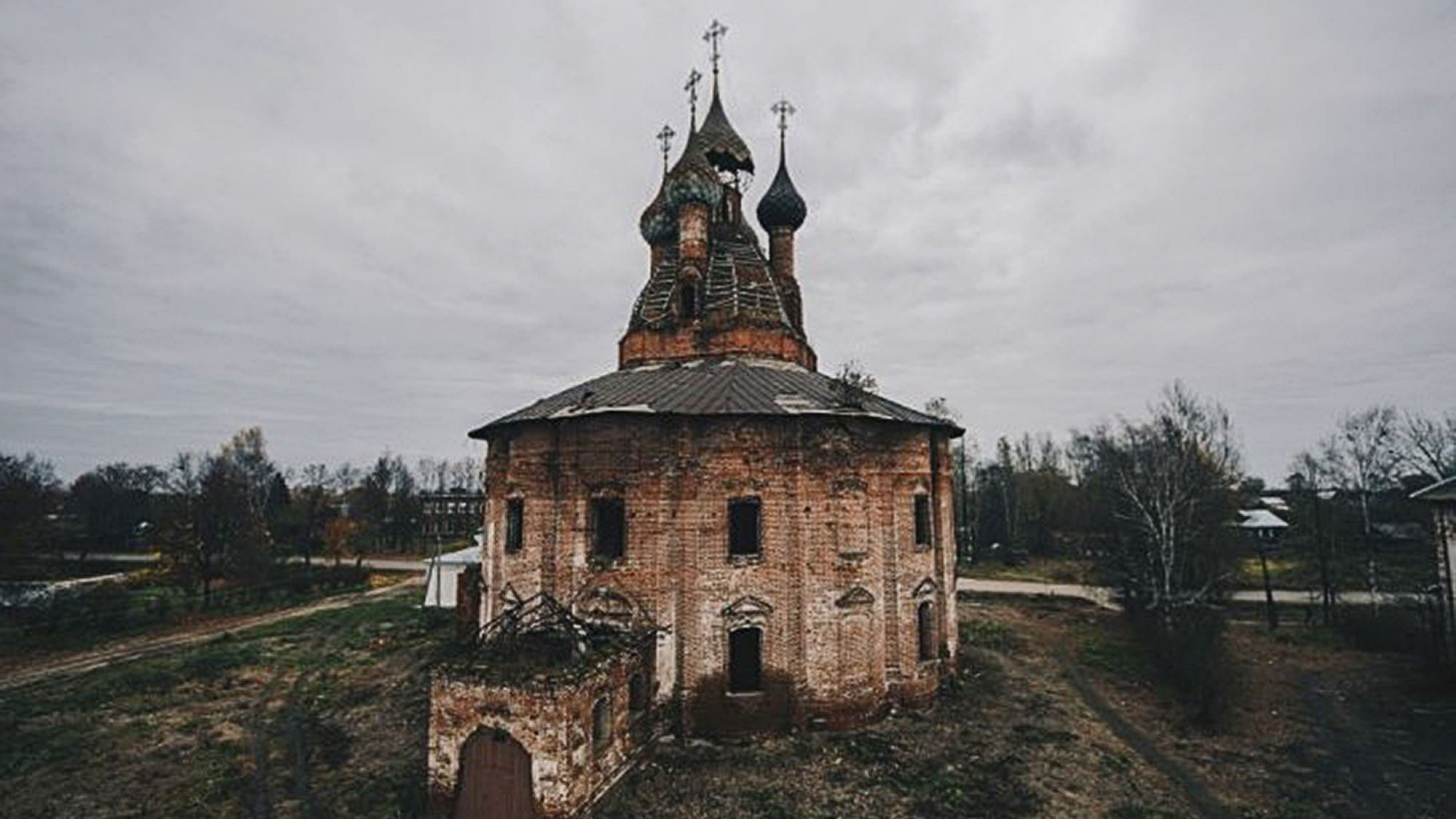These haunting images of abandoned Russian churches in the middle of fields or hidden in forests have been captured by Russian photographers documenting the country’s fast-vanishing religious heritage.
Some of the charges date back hundreds of years, and even after decades of decay and exposure to the elements still maintain their beauty, even as the colourful hand-painted walls crumble and the stained glass windows disintegrate.
The inspiring photos of the forgotten churches were taken by the 30-year-old Russian Alexander Sukharev, who has a passion for photographing abandoned buildings and structures overgrown by nature.
Alexander, a photographer from Moscow, told Newsflash: “Sometimes you go into a church and find yourself in a former warehouse for auto parts, and sometimes you find yourself in halls where it looks as if it had been rearranged so that discos could be held there.

“Sometimes you would even find a statue of Lenin stood beside Jesus on the cross.”
Alexander, who has 53,600 followers on Instagram, keeps them intrigued with pictures of places and buildings forgotten by civilisation and slowly being reclaimed by nature, with a special focus on churches that clearly stand out from his other work.
Many of the churches did not fall into disrepair merely due to the passing of time but were targeted by the anti-religious communist system in the 20th century before being looted in the 1990s during the collapse of the Soviet Union.
Nina Sekacheva, a specialist in Christian art and church architecture, told the local news site Dom that during the communist period: “Some of the churches were used for everyday activities such as warehouses, hospitals and markets.
“In the 1990s many of the icons and valuable objects were taken from the churches and sold.”
She added: “Icons and objects that during the communist period were not of great value suddenly became expensive as demand from the black market boomed.”

A photo of an abandoned church in Russia by Alexander Sukharev, 30, from Moscow, Russia. 
A photo of an abandoned church in Russia by Alexander Sukharev, 30, from Moscow, Russia. 
A photo of an abandoned church in Russia by Alexander Sukharev, 30, from Moscow, Russia.
Each church has its own story, the Church of the Intercession of the Holy Mother of God in the village of Zamoshie was was built in 1812 and remained open for over a century when it was closed in the 1930s.
In 1937, the church bells were destroyed and heavy machinery was used to try and completely demolish the whole building. The building survived and was turned into a storehouse for grain.
Both the Church of the Intercession in Zamosh and the Church of St John the Theologian in the Kaluga region survived the 1930s, but in 1961 local authorities shut them down and removed all iconography.
The Church of the Kazan Icon of the Mother of God in the village of Kurba, in the Yaroslavl Region, was closed in 1929-1930, during the decades that followed the church collapsed. In 1988 plans were made to restore the building but restoration work was put on hold in 1993 and has remained on hold.
Despite the church being abandoned, occasionally people still visit them, Alexander said: “Sometimes a grandmother who remembers the place in its prime comes to pray once a week, or maybe once a month.”

A photo of an abandoned church in Russia by Alexander Sukharev, 30, from Moscow, Russia. 
A photo of an abandoned church in Russia by Alexander Sukharev, 30, from Moscow, Russia.
He added: “Once we met one in the Ivanovo region, she was already about 80 years old, but she stubbornly continued to go to this abandoned church.”
Sekacheva explained that despite the occasional visitor to these once-bustling churches the demand for them in the countryside has been dropping for decades.
She points out that the demographic changes seen in Russia have resulted in people moving to cities and the countryside become increasingly depopulated.
She said: “The life of the village, even in the past two decades, has been declining – the number of people is decreasing, leaving for cities.”
She added: “Our regions are emptying, villages are emptying, dying out. And the abandoned temples remain as witnesses of the once seething life here.”

A photo of an abandoned church in Russia by Alexander Sukharev, 30, from Moscow, Russia. 
A photo of an abandoned church in Russia by Alexander Sukharev, 30, from Moscow, Russia.
Sekacheva believes that the churches can only be saved if the regions they occupy are developed, and only then are tourists and locals likely to return – incentivising their protection and refurbishment.
“Visiting abandoned places allows you to connect directly with history.”
He added: “This experience is more impactful than any sort of history class you might be given at school.”
To find out more about the author, editor or agency that supplied this story – please click below.
Story By: Arian Movileanu, Sub-Editor: James King, Agency: Newsflash
The Ananova page is created by and dedicated to professional, independent freelance journalists. It is a place for us to showcase our work. When our news is sold to our media partners, we will include the link here.




